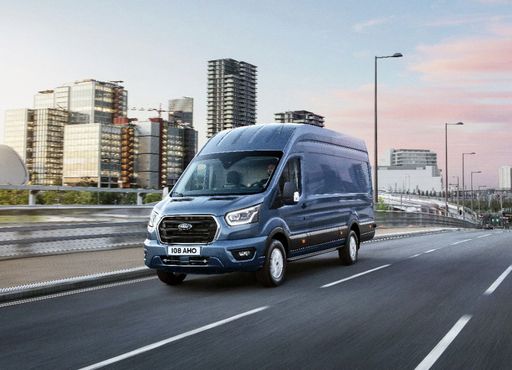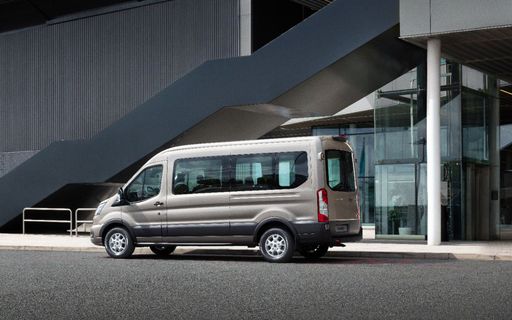Ford Transit Bus vs Mercedes Sprinter Bus - Differences and prices compared
Costs and Efficiency:
When it comes to price and running costs, the biggest differences usually appear. This is often where you see which car fits your budget better in the long run.
Mercedes Sprinter Bus has a evident advantage in terms of price – it starts at 41400 £, while the Ford Transit Bus costs 50500 £. That’s a price difference of around 9117 £.
Fuel consumption also shows a difference: Mercedes Sprinter Bus manages with 9.30 L and is therefore barely noticeable more efficient than the Ford Transit Bus with 9.40 L. The difference is about 0.10 L per 100 km.
Engine and Performance:
Under the bonnet, it becomes clear which model is tuned for sportiness and which one takes the lead when you hit the accelerator.
When it comes to engine power, the Mercedes Sprinter Bus has a noticeable edge – offering 190 HP compared to 150 HP. That’s roughly 40 HP more horsepower.
There’s also a difference in torque: Mercedes Sprinter Bus pulls slightly stronger with 450 Nm compared to 390 Nm. That’s about 60 Nm difference.
Space and Everyday Use:
Beyond pure performance, interior space and usability matter most in daily life. This is where you see which car is more practical and versatile.
Seats: Ford Transit Bus offers clearly more seating capacity – 9 vs 2.
In curb weight, Ford Transit Bus is hardly perceptible lighter – 2338 kg compared to 2356 kg. The difference is around 18 kg.
When it comes to payload, Ford Transit Bus hardly perceptible takes the win – 1162 kg compared to 1144 kg. That’s a difference of about 18 kg.
Who wins the race?
The Ford Transit Bus proves to be barely ahead and therefore becomes our DriveDuel Champion!
Ford Transit Bus is the better all-rounder in this comparison.
 @ Ford Motor Company / Ford Media Center
@ Ford Motor Company / Ford Media Center
Ford Transit Bus
Costs and Consumption
View detailed analysis
Engine and Performance
View detailed analysis
Dimensions and Body
View detailed analysis
Ford Transit Bus
The Ford Transit is the reliable people-mover operators turn to when they need space, stamina and sensible running costs without fuss. It doesn't try to be glamorous, but its practical interior, flexible layouts and honest character make it a smart, stress-free choice for shuttle services and group transport.
details @ Ford Motor Company / Ford Media Center
@ Ford Motor Company / Ford Media Center
 @ Ford Motor Company / Ford Media Center
@ Ford Motor Company / Ford Media Center
 @ Ford Motor Company / Ford Media Center
@ Ford Motor Company / Ford Media Center
Mercedes Sprinter Bus
The Mercedes Sprinter is the go-to people-mover for operators and families who want robust practicality wrapped in a premium feel, with a flexible interior that can be tailored from shuttle to mobile office without breaking a sweat. Sporting the three-pointed star and the driving manners of a tall estate, the Sprinter Bus is comfortable, dependable and refreshingly easy to live with day after day.
details
 @ Ford Motor Company / Ford Media Center
@ Ford Motor Company / Ford Media Center
|
|
|
|
|
Costs and Consumption |
|
|---|---|
|
Price
50500 - 52900 £
|
Price
41400 - 55900 £
|
|
Consumption L/100km
9.4 - 9.5 L
|
Consumption L/100km
9.3 - 12.3 L
|
|
Consumption kWh/100km
-
|
Consumption kWh/100km
-
|
|
Electric Range
-
|
Electric Range
-
|
|
Battery Capacity
-
|
Battery Capacity
-
|
|
co2
245 - 248 g/km
|
co2
244 - 322 g/km
|
|
Fuel tank capacity
70 L
|
Fuel tank capacity
71 L
|
Dimensions and Body |
|
|---|---|
|
Body Type
Bus
|
Body Type
Bus
|
|
Seats
9
|
Seats
2
|
|
Doors
4
|
Doors
4
|
|
Curb weight
2338 - 2385 kg
|
Curb weight
2356 - 2559 kg
|
|
Trunk capacity
0 L
|
Trunk capacity
-
|
|
Length
5531 - 5981 mm
|
Length
5932 - 6967 mm
|
|
Width
2059 mm
|
Width
1993 mm
|
|
Height
2530 - 2533 mm
|
Height
2633 - 2659 mm
|
|
Max trunk capacity
-
|
Max trunk capacity
-
|
|
Payload
1115 - 1162 kg
|
Payload
814 - 1144 kg
|
Engine and Performance |
|
|---|---|
|
Engine Type
Diesel
|
Engine Type
Diesel
|
|
Transmission
Automatic
|
Transmission
Manuel, Automatic
|
|
Transmission Detail
Automatic Gearbox
|
Transmission Detail
Manual Gearbox, Automatic Gearbox
|
|
Drive Type
Front-Wheel Drive
|
Drive Type
Rear-Wheel Drive, All-Wheel Drive
|
|
Power HP
130 - 150 HP
|
Power HP
114 - 190 HP
|
|
Acceleration 0-100km/h
-
|
Acceleration 0-100km/h
-
|
|
Max Speed
-
|
Max Speed
150 - 159 km/h
|
|
Torque
360 - 390 Nm
|
Torque
300 - 450 Nm
|
|
Number of Cylinders
4
|
Number of Cylinders
4
|
|
Power kW
96 - 110 kW
|
Power kW
84 - 140 kW
|
|
Engine capacity
1996 cm3
|
Engine capacity
1950 cm3
|
General |
|
|---|---|
|
Model Year
2024
|
Model Year
2024 - 2025
|
|
CO2 Efficiency Class
G
|
CO2 Efficiency Class
G
|
|
Brand
Ford
|
Brand
Mercedes-Benz
|
What drivetrain options does the Ford Transit Bus have?
Available configurations include Front-Wheel Drive.
The prices and data displayed are estimates based on German list prices and may vary by country. This information is not legally binding.
